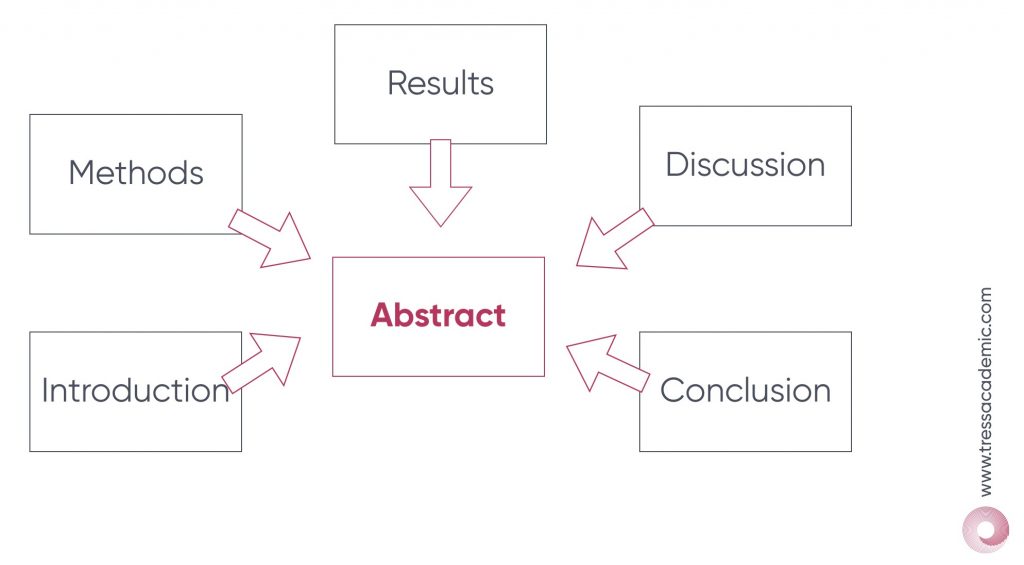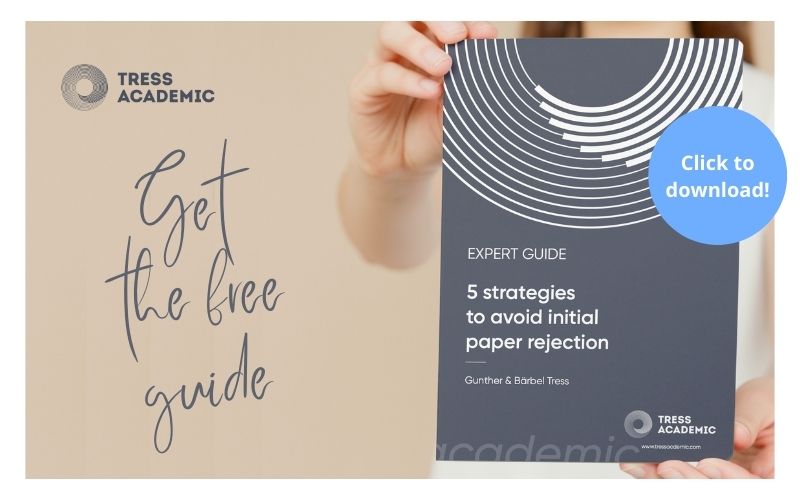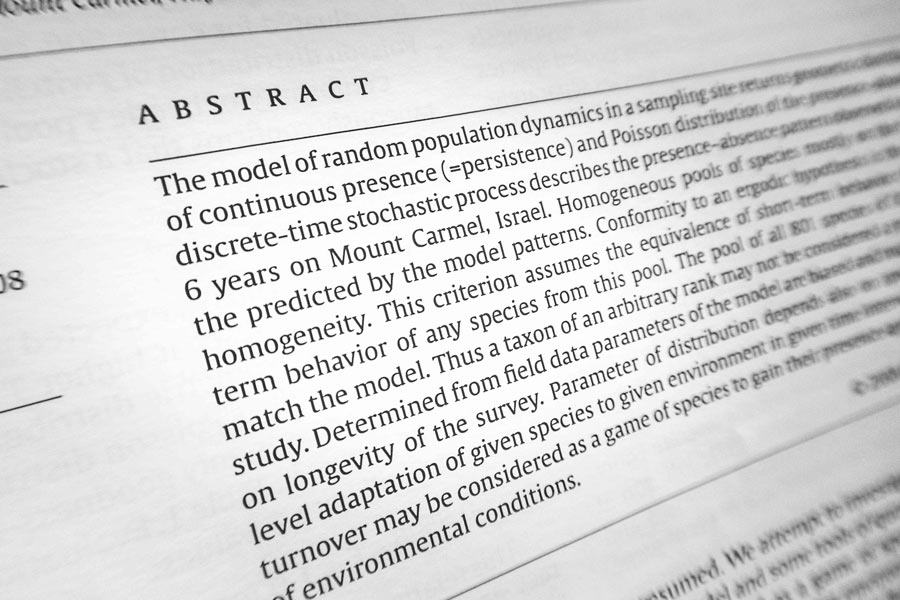Are you struggeling with writing the abstract of your research paper?
Let us show you in 10 steps how to write a really good paper abstract that will help you get published and likely generate a bigger audience for your work.
A good abstract is an invitation to read your paper
The abstract of your paper will be found by lots of researchers in online databases. They might come across your abstract through a database search, or through using keywords in their search. They will scan your abstract, and if it is convincing and well-written, they might download and start reading your paper.

But, think about it, how often have you downloaded a paper after you read a really poor, confusing and irrelevant paper abstract? We guess… not too often. Why would you start reading a paper if the abstract is already poor?
Therefore, if you want your paper to be published, found, and read by many of your peers, to let them know the good research you are doing, you should craft a well-written abstract! Let us show you how you can develop an abstract that readers will like and that will help you to promote your work.
What is an abstract?
There is a common misunderstanding about abstracts: The abstract is not a teaser of a paper, where you start to tell some interesting bits about the research that is to come in the paper, but you stop when it really gets exciting, to tempt the reader.
The abstract is not like the trailer of a good movie: Once you see the trailer, you think “this is cool” and you decide to see the movie to see how the story develops. Once you watch the movie, most of the trailer scenes come up in the first five minutes, but the story has not yet enfolded.
The abstract is also not an outline for a paper that you are going to write, where you briefly sketch the content that should be covered in your paper. This is not what an abstract should be used for.
An abstract is the short summary of a paper published in an international peer-reviewed journal. Abstract and summary can be used synonymously in papers. The abstract summarises the entire content of the paper, not only some parts.
After reading the abstract, your readers should have a very clear idea what they can expect to read in the paper. Yes, the information in the paper will be far more detailed and specific but the research question, how it has been addressed and what has been found should already be clear to the reader after reading the abstract.
In a paper, the abstract appears on the front page. It also appears as an isolated text in publishers’ search databases. This is where your peers, the potential readers of your paper, will most likely first find it.

Why is the abstract important?
Your paper abstract serves two main purposes:
Purpose 1: It plays a key role when other researchers look for literature on a specific topic. It informs them about the content and the benefits of your paper. Based on the abstract, a researcher might determine the relevance of a paper and might decide to read the paper.A good abstract on a topic someone is interested in extends them an invitation to read the entire paper!
Purpose 2: Your abstract has also an important function in the peer-review process. Once your paper is submitted to the journal to be judged by its editors and reviewers, they will first look at the abstract of the paper to get a first impression of your topic and its relevance. When an editor decides to pass it on to a reviewer, this reviewer will also see your abstract first. They will use the abstract to help them decide to accept or decline the review invitation.
A well-written abstract may make a reviewer like your paper that much more. Getting a review invitation with a poor abstract creates no appetite to review a paper. If the reviewer decides to review anyway he or she might be biased from the start and look merely for confirmation that the rest of the paper follows the quality of the abstract. You find more information on how reviewers look at your paper in our blog post #9: “What reviewers of your paper first look at.”
When to write the abstract?
The abstract is often the first thing readers start with and it comes on the first page. But please, do not write it as the first section of your paper. Write the abstract only once the other paper sections are completed. You can only summarise what you have already written.
If you write the abstract at the beginning, you risk writing statements that are not included in the paper. As a consequence, you will have to rewrite your abstract later.
How long does it take to write an abstract?
If the paper sections are well-written and you follow the steps outlined below, it should not take you longer than 15-20 minutes to write a very informative abstract.

How long should an abstract be?
Most abstracts are between 150 and 300 words. Seldom will you find abstracts of more than 500 words in papers. For conferences, abstracts can sometimes be longer, and labelled as extended abstracts (up to 1,000 words).
Most journals have a standard maximum length that they consider appropriate for abstracts. You can find it in the journal guidelines for authors. You can also look at the length of other abstracts within the same journal. Do not substantially exceed the maximum length.
10 steps for how to write the abstract
If you have already written your paper, writing a good abstract that satisfies the demands specified above is NOT difficult. The good news is, you don’t need to create any new content. You need only to summarise what you have already said somewhere else in the paper.
As with any book summary, a paper abstract should summarise all text sections. Regardless what your main paper sections are, they all should be recognisable in your abstract.
Let’s assume you’re writing an abstract for a standard research paper, consisting of the five typical paper sections: Introduction, Methods, Results, Discussion and Conclusion. OK, let’s get started and create an abstract for your paper by following the 10 easy steps outlined below.
You can also download our free checklist “How to write a paper abstract” to guide you in the process of crafting your abstract.
Step 1: Define section headings
Write the main section headings of your paper on a sheet of paper (e.g. if you have a classical research paper, write down the headings: Introduction, Methods, Results, Discussion, Conclusion). They are the backbone elements of your abstract and ensure that you summarise all paper sections.
Step 2: Summarise Introduction
Look at your Introduction section again. Imagine you need to explain to somebody in one to two sentences what you have written in your Introduction. You cannot go into much detail. Write one sentence about the overall problem, the background of your research, and tell the reader why it is important. In your second sentence, state the paper objective (the research question that your paper addresses). The reader needs to understand what the research aim of your paper is. There’s no need to report the literature review here.
Step 3: Summarise Methods
Now, screen the Methods section of your paper. What are the key method steps that you have undertaken to achieve the objective stated above? Summarise these steps again in one to two sentences, no more. You do not need to tell your readers the specific details of your methods. It is most important for the reader to understand which methods you used. Numbers, percentages, sample sizes and other specifications can typically be left out unless they represent a very unique feature of your paper and therefore should be stated.
Step 4: Summarise Results
Next, review your Results section. What is the main finding of your study? Describe it in one to two sentences. Make sure that you respond to the research questions that you stated above. The reader wants to know what the outcome of your study is. Again, use numbers and details only very sparsely. If your result can be expressed in one key figure, state it, otherwise describe in words. Do not present many small details and results that may confuse the reader.
Step 5: Summarise Discussion
Briefly browse through your Discussion section. What are the main results and aspects you are discussing? Draft one sentence where you mention the three most important ones. If there is one striking aspect that results from your findings then mention it as well. In the abstract, the discussion of single aspects can be stated within the same sentence as the result.

Step 6: Summarise Conclusion
Read your Conclusion section again. What is the main take-home message that you want to tell your readers? Place this message at the end of the abstract. You can even copy it from the conclusion section, you do not have to reinvent the wheel by creating totally new sentences. In the abstract, discussion and conclusion can be merged but make sure readers find a concluding statement in your abstract. Otherwise, they would assume there is nothing to conclude from your paper.
Step 7: Edit language, style and length
Now that you have a draft version of your abstract, you may want to edit it to improve clarity for your readers. One aspect to review is the tense form you chose. We recommend you write the abstract in the past tense, as it is a summary of a paper that reports on an activity that took place in the past. You are mainly referring to your own work here and therefore, past tense is appropriate.
A second aspect to look at is style. Avoid sentences that are too long and complicated. Try to use simple and easily understandable phrases and reduce the use of too many relative clauses. Avoid an extensive use of passive voice. It is your abstract of your paper reporting on your work, and therefore, you can use personal pronouns such as “I” and “we”.
A third aspect to look at is length. It is a good idea to keep your abstract short. Even if the journal has no specific word limit for the length of the abstract, stick to a maximum of 300 words. A longer abstract takes more time to read and might be a reason why yours is skipped. If the journal has a word limit of 150-200 words or even less, you might need to modify the steps outlined above and summarise each paper section in one sentence only.
Step 8: Use key phrases and key words
In an abstract every sentence and every word needs to be well chosen. You do not have a lot of space to explain things here. You must make sure that every sentence has a clear function in your abstract. You do not need transition sentences to bridge different parts of the paper.
It is helpful to use standard phrases like:
- “Our aim with this paper was …” for the Introduction.
- “We analysed/measured …” for the Methods.
- “We found that …” for the Results.
- “We discussed …” for the Discussion.
- “In conclusion …” for the Conclusion.
Then your readers will always understand which section of the paper your are talking about.
Another aspect to consider in your abstract is your choice of words. Potential readers will look in databases and search keywords of topics they are interested in. To ensure that your abstract comes up in a database search, make sure that you use relevant and common keywords that describe your paper content well.
Step 9: Reorganise and structure the text
Journals have different types of abstracts that they want you to write. They define their preference in the guidelines for authors which you can also identify from the published abstracts within the journal.
A common type is the informative abstract: You summarise all paper sections as described in the steps above and include all sentences into one paragraph, without section headings.
The alternative is the structured abstract: You keep the headers of the main paper section and summarise the content of these sections briefly below each of the headers. A structured abstract consists of several short paragraphs.
Step 10: Avoid References, sources and abbreviations
Usually, abstracts should be written without mentioning references or sources in the text. As the abstract is read in isolation from the paper, it would not help readers if you provide references in the text because the full reference cannot be seen.
Also, keep the use of abbreviations to a minimum. Only use abbreviations when you are certain they are common knowledge to your audience and cannot be misunderstood.
Conclusion:
Your abstract is an important element of your journal paper as it summarises the main paper content. It plays a vital role in helping people to find your paper and in deciding to read it. Write your abstract after you finish all manuscript sections and keep it short. Readers want to get an overview of your paper as quickly as possible and do not want to read a lengthy text.
Make sure to summarise all paper sections. Do not hold back important information but do not get lost in details either. Keep in mind a reader from your field whom you want to briefly describe your research to, and what is the good stuff that you found. Follow the 10 steps outlined above and you will end up with a well-crafted abstract that invites them to read your whole paper!
If you want more help with writing a great journal paper, please sign-up to our Paper Writing Academy.
Related resources:
- Checklist: How to write a paper abstract
- Expert Guide 5 Strategies to Avoid Initial Paper Rejection
- SMART ACADEMICS Blog post #5: How to get started with writing papers?
- SMART ACADEMICS blog post #9: What reviewers of your paper first look at.
- SMART ACADEMICS blog post #50: Mastering the literature review during the Corona lockdown
- SMART ACADEMICS blog post #91: Find the right journal for your paper following these 8 steps
- SMART ACADEMICS blog post #105: The perfect paper—and how to create yours!
More information:
Do you want to write a journal paper?
If so, please sign up to receive our free guides.
© 2019 tressacademic.com
#PublishingPapers, #WritingPapers, #JournalPaper, #PaperAbstract
